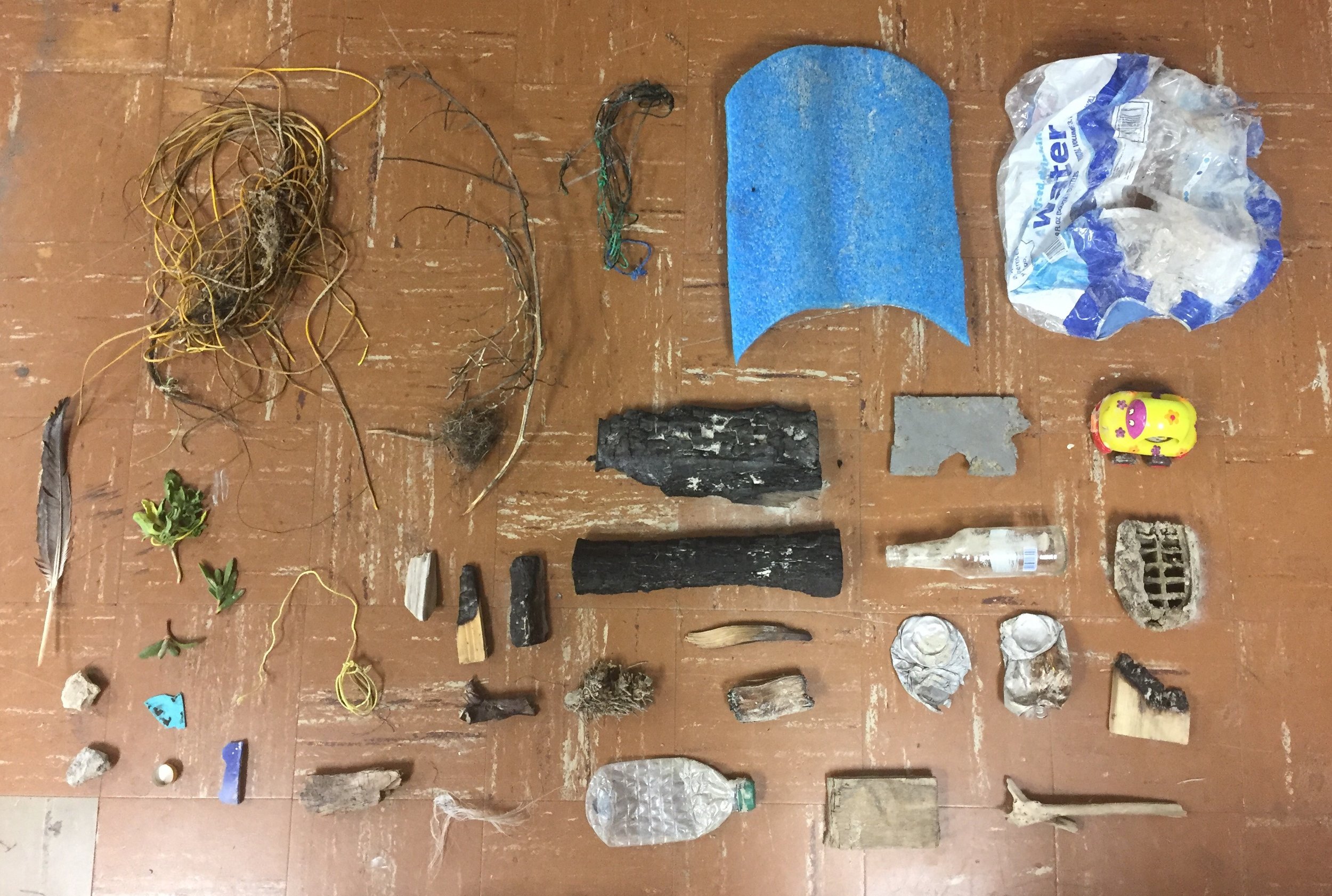Prior to class: Read To Life p 43-50 - Eco Art Materials Make a list of 10 materials that you had not considered art materials. Select 2 from this list and design a sculpture using that material as primary - other materials could be used for connecting or structuring. Sketch and write about these two sculptures. Come to class ready to participate where you will be sharing your theoretical sculpture.
In class we started the discussion by observing the sculptures used for Landing on the Island, and the importance of being able to reuse as much as possible. However this is only one of the issues artists should consider when choosing a material. Our materials are not only considered for aesthetic value but the meaning behind them. The class was asked to consider materials that we have not considered in the past. Here is my list:
Materials Not Considered:
- Slime
- Water/Oil
- Cornstarch and Water
- Maps
- Dried acrylic paint
- Sand/shells/pebbles
- Terrariums
- Paper pulp
- Plexiglass
- Windowscreens/mesh
For the class it was generally hard for us to come up with individual lists. Contemporarily, art making is crossing mediums and no longer is art limited to traditional art mediums. Thus making anything and everything available to become art.
We considered the footprints of the materials we used. When considering a materials footprint, people consider the resources used, consumed, and waste generated. In the process of making Eco Art it is easy to consider a material's footprint as a theme or meaning of the work. The class was then asked to design a sculpture using non-manufactured materials. While we did come up with projects as a group, they were not necessarily environmentally friendly or Eco Art.
When I started class on Tuesday, I wasn't really sure what I was going to be doing for sculpture class this semester. I was (and still am) interested the social aspects behind the crisis of our drinking water (it's not safe to drink from the faucets, the gulf is dirty, etc.). However I was also considering making my own paper, out of my paper scraps or locally sourced cotton. Which is why I listed paper pulp as one of my materials I had never considered. It was only after I did some research that I realized paper pulp is a pretty viable sculpture medium. So i had designed a paper sculpture for class.
I was still considering the concept of water and waves, but was trying to bring it into a installation, either by draping paper while it was in its drying stages or the recycling the iridescent mesh I had used last semester. But I wasn't sold on the idea, and didn't mention it to anybody.
The next day I had a short conversation with Ryan, having already told him about my budding interest with water issues, he recommend collecting the wood that had washed up on the bay and printing those along with my washes. We talked about the incorporation of man made and natural materials. Which got me thinking about everything else that is laying about around the beach. I then had the idea to create 100 small sculptures (and corresponding prints) of items found on the beach, either trash, wood, seaweed, rocks, sand, plants, shells, you name it. So yesterday I made a quick trip to Whitecap beach and collected whatever I could find whatever I could carry in my bag. This is some of what I found:
I'm pretty excited with what I found. The next step is to figure out how to print some of these objects. Then comes the building of the sculptures. I want to keep them small, something that can fit in your hand. It almost reminds me of the things you can find at the beach gift shops. I may even consider displaying them in a similar matter.


